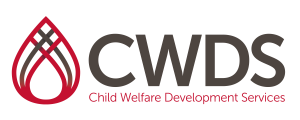CWDS Curriculum
Understanding and Managing AWOL Behaviors in Out of Home Placement
Level: Advanced Practice
Credits: 3
Intended Audience: Orangewood Children and Family Center Staff and Service Providers
Description of Course: Running away from placement, sometimes referred to as AWOL or elopement, is a significant problem in residential treatment programs and poses critical concerns for treatment providers. Moreover, running away has a negative impact on treatment and exposes the youth to potential harm and victimization while away from care providers. In fact, running away is the single most common reason for premature termination of adolescents from residential treatment programs. Running away has also proven to be one of the most difficult behaviors to deal with because of the variety of factors that influence and drive individual youth to leave care. This workshop will review the most current research findings on runaway behaviors; review risk factors associated with runaway behavior, and provide specific recommendations for the staff interventions and agency policies regarding runaway behaviors.
Intended Objectives:
- Participants will be able to identify risk factors associated with AWOL behavior.
- Participants will review the characteristics of youth with run away and will learn to conduct a risk assessment of individual youth dynamics.
- Participants will identify agency policies and procedures, beginning at intake, which can mitigate a youth’s need to runaway.
- Participants will identify milieu factors which can prevent runaway behavior.
- Participants will learn how to formulate de-escalation plans for youth at risk of AWOL.
- Participants will learn how to debrief youth who return from AWOL
Topics Include:
- Literature review and research summaries of runaway behavior.
- Pre-treatment and placement interventions.
- Programmatic prevention strategies
- Interventions for youth at risk of AWOL
- Individual interventions for youth at risk of AWOL
Independent Living Skills & Youth



